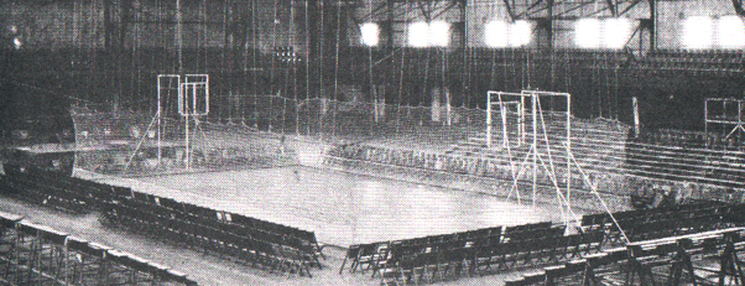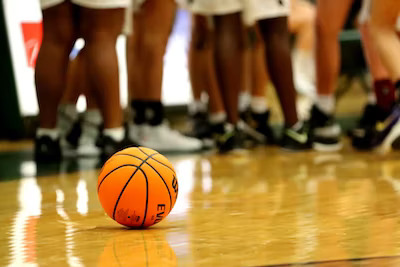Many different governing bodies manage different sets of rules for the game of basketball. One of the great aspects of the sport of basketball is the ability to understand a basic set of rules that can be applied to many different types of games within the sport.
While a bit different from the original 13 rules of basketball, here are a list of resources for official basketball rules today:
- NBA Official Rules
- WNBA Official Rules
- NCAA Men’s Basketball Rules
- NCAA Women’s Basketball Rules
- Comparison of all USA Basketball rules (NCAA vs. NBA vs. FIBA)
Each states high school athletic association will also maintain their own set of rules. Almost every basketball league, from CYO and the Boys and Girls Club to Men’s and Women’s recreational leagues, will cover some basic set of rules. There are many unwritten rules of streetball and pickup games as well.
In the end, it is important to understand these fundamental rules of the game:
Basketball Basic Rules
Number of players
If you want to play basketball for fun, you have the possibility of playing on your own. But you can also play team games with either 1, 2, 3, 4 or 5 players on each teams. Teams can be mixed, with boys and girls, or not.
On a competition level, a team is made up of 5 players playing on the court and several players sitting on the bench that can be used for substitution during the whole period of the game.
Positions
Each player is assigned a position when playing. This position is usually determined by the height of the player.
The tallest player on the team usually plays “center” also known as “position 5”, while the medium size ones play “forwards” or “position 3 and 4”. The shortest players then play “guards” or “position 1 and 2”. While these positions are very common, in no league are there any exact rules for positions of players. Each team merely needs five players on the court.
Scoring
A player scores when he manages to throw the ball into the basket, with the ball passing through the basket from above the hoop. Scoring a basket increases the team’s score by three (3), two (2), or one (1) point.
If the player successfully shoots from outside of the 3 points line, the basket is worth 3 points, otherwise it is worth 2 points.
It is also possible to score one point when shooting from the free throw line, after a foul for instance.
Play
Play begins with a jump ball at center court, or one team starting with the ball. Each team is given a hoop to try to score on and a hoop to defend. If the team with the ball scores, the opposing team will get the ball automatically. If the team with the ball misses a shot or loses the ball (a turnover), the opposing team can immediately begin trying to score at their hoop.
When shots are taken, the ball is up for grabs. Either team is allowed to rebound the ball.
Movement of the ball can take place by and individual or between two players. For an individual player to move with the ball on the court, the player must dribble the ball. To move the ball from one player to another, the player can pass the ball to their teammate.
Play stops when the ball goes out of bounds. The team who touched the ball last prior to it going out of bounds will lose possession and the opposing team is given the ball. The team will then inbounds the ball by passing it from out of bounds to a player inbounds.
Play also pauses when a basket is scored or a foul is called. If a basket is scored, the opposing team must take the ball out of bounds underneath their basket and pass the ball inbounds to begin play again. That team will then be heading towards the opposite end of the court.
Defense
Defense for one team takes place when the opposing team has control of the ball. The most basic defense is called “man-to-man” defense. Each player guards a player on the opposing team. As a general rule of thumb, good defense is to stay between your man and the basket you are defending.
On defense a player is allowed to try to steal the ball by deflecting a pass or stealing a dribble. The player is also allowed to knock the ball out of an offensive players hands, as long as a foul is not committed. Lastly, defensive players are allowed to block shots to prevent the ball from going in the hoop.
Violation
A violation occurs when the player breaks one of the rules of basketball. A violation results in the awarding of the ball to the opponents.
Another violation is the result of the player taking more than 2 steps without bouncing the ball on the floor. This is called Traveling.
Another example of violation occurs when a player stops dribbling and then starts dribbling again or when he bounces the ball with both hands on the ball. We call this a double dribble.
A violation is also committed if you twist your hand, when in contact with the ball, beyond the vertical, bringing it under the ball. This is called a carry, as the hand must always remain on the top of the ball.
Fouls
A foul is an illegal action that can be committed by a player from one team against a player from the opposing team. Basketball is generally said to be a non-contact game. If contact occurs beyond what is deemed to be reasonable, or if a player thereby obtains an unfair advantage from it, a foul is committed.
There are two types of fouls. The first are called defensive fouls. They occur when the offensive player is being fouled by the defender. Defenders should not block, push, trip, strike or hold the player in possession of the ball. The second ones are the offensive fouls. For example, a player on offense commits a foul when charging into a stationary defender.
End of Play
Organized games are played for a certain time duration. Usually there are breaks into either halves or quarters. At the end of the game, the team with the most points wins. If there is a tie, the teams play a short overtime period to determine the winner.



